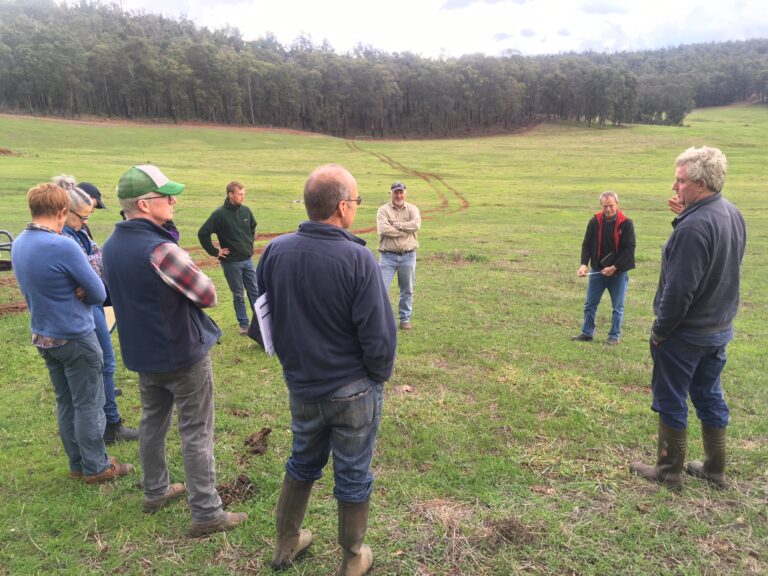
Farmers battling current drought-related feed shortages will be tempted to put hungry livestock straight onto emerging green shoots following the first autumn rains.
But our research and experiences shared by other producers in recent years shows while this might offer a small immediate relief, it could be at the expense of greater potential gains down the track.
At a Grazing Matcher™ event back in 2018, Boyanup Farmer Rob Bell likened those first little bits of green to solar panels.
“Chewing paddocks as soon as you see a bit of green feed is probably the worst thing you can do,” he said at the time.
“You set yourself back so far. Those leaves are the solar panels to grow more pasture. Take the solar panel away and it’s got no power to grow.”
The aim of autumn deferral is to concentrate stock into one or more ‘sacrificial’ paddocks and provide them with supplementary feed so pasture in the remaining paddocks can properly establish before being grazed.
In the case of ryegrass, that means withholding grazing until plants have grown 2-3 leaves per tiller, because grazing at less than two leaves can stunt growth.
It’s a critical step in pasture production but sourcing supplementary feed during the current shortages could prove difficult.
Rob said the knock-on effects from a poor deferment strategy were huge, especially with a cold winter.
“WA is a unique climate where it just doesn’t grow in winter,” he said.
“So if you don’t grow grass in autumn, you’re going into spring chasing your tail. It affects fodder production because you’re two weeks late locking up the hay paddock and your yields are down. You set yourself up for a bad start to the following year.
“Deferred grazing is probably key to getting started the right way.”
Brodie Allen from Boallia near Busselton, who also attended the Grazing Matcher event, said he also saw the value in deferment.
“If you defer you get more growth throughout the season which means you can cut more (fodder), which means you can run more stock,” he said.
“Between that system and set stocking, you might double your stocking rate.”
Mark Scott from Nannup has used deferment since 1997.
“Traditionally we have cows on the ground on May 15. Because of the dry start in 2018 I went to six weeks deferred grazing out to June 15,” he said.
“By far and away it produces more grass, but you need something to feed. We went well over-budget on hay and pellets in 2018.”
Grazing Matcher™ began as a collaboration between South West NRM and Western Beef Association back in 1997.
The program was created to help livestock producers:
- Improve grazing practices
- Produce better hay and silage
- Allocate feed to most effectively meet animal production targets.
Click here for Grazing Matcher Project Page
